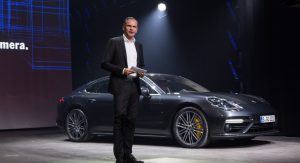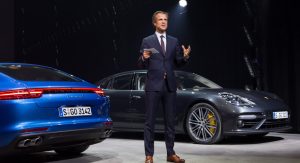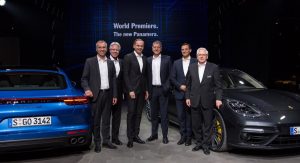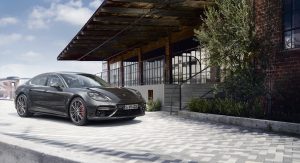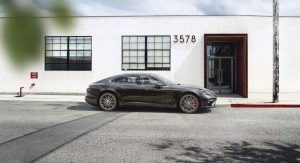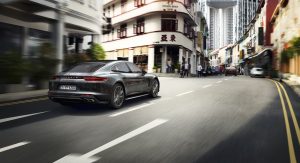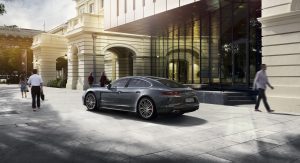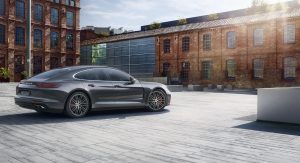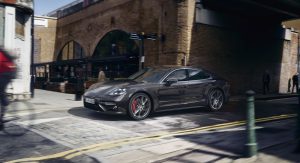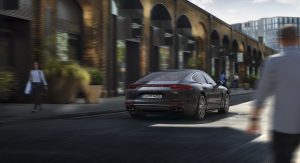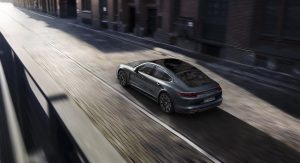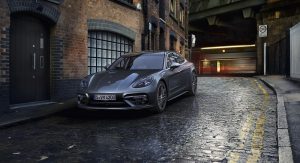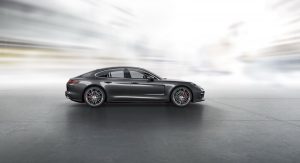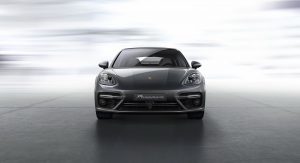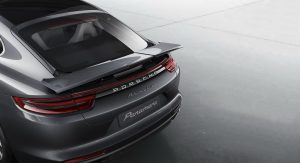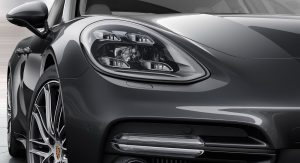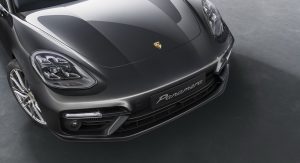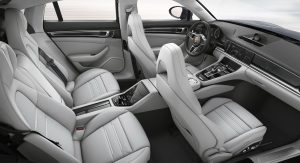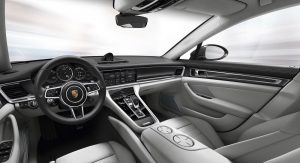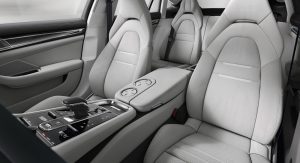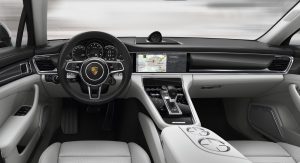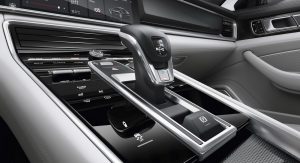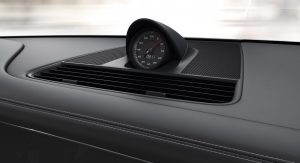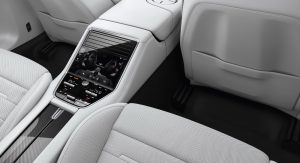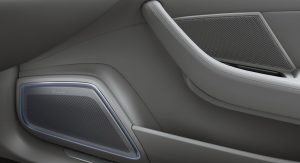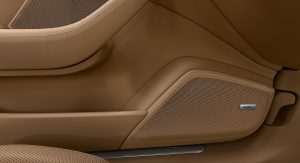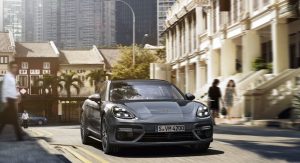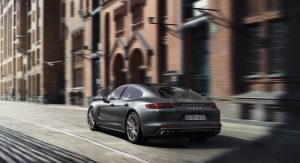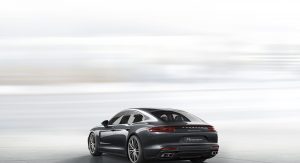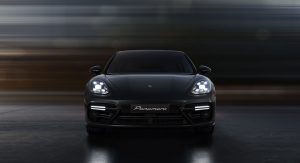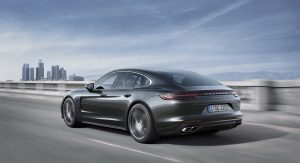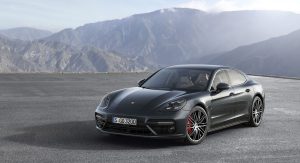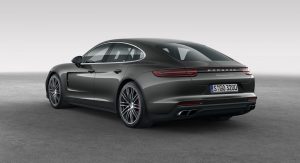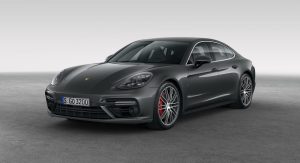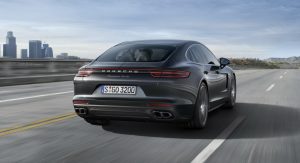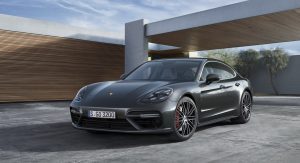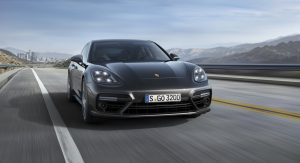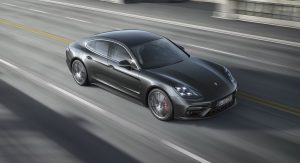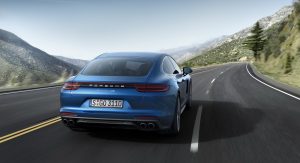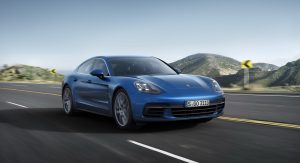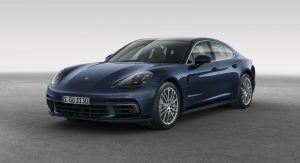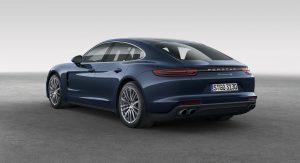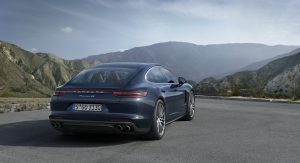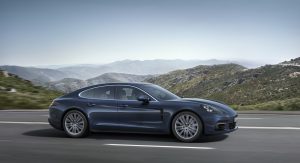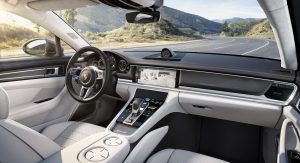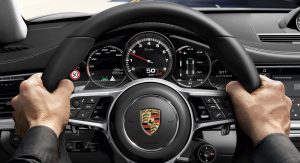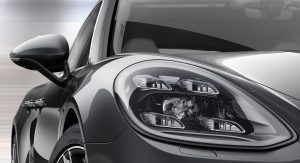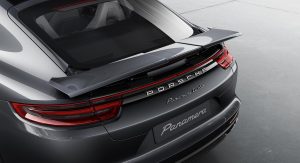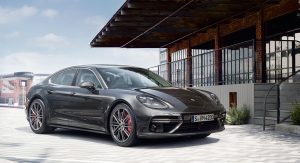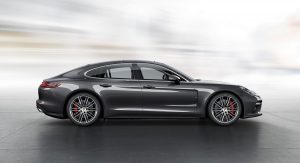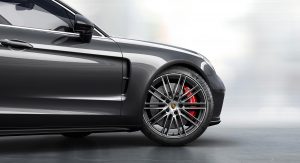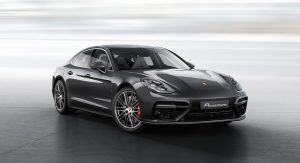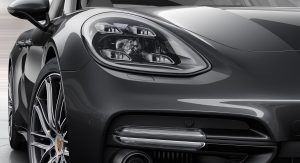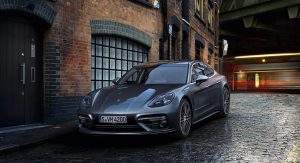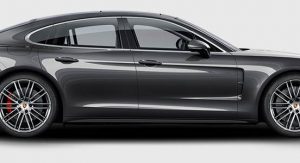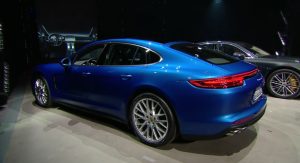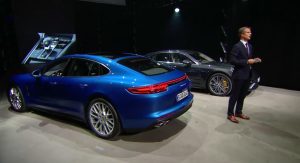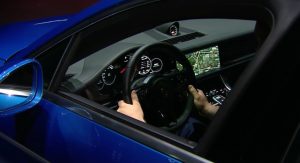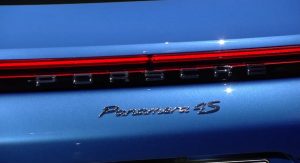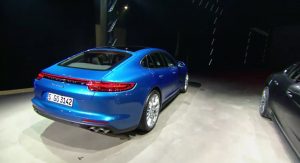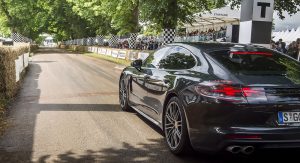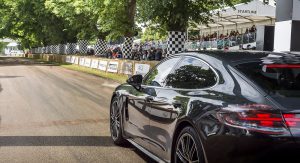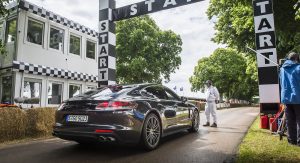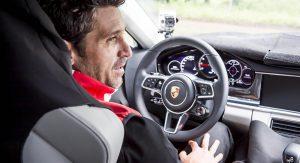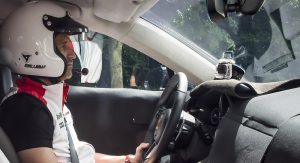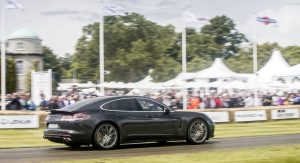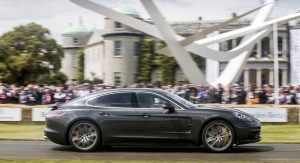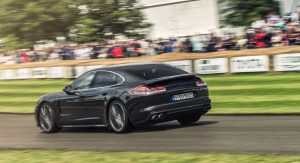For all its merits as a luxury sports saloon, the original Panamera Mk1 could never escape its bloated and lackluster looks, something that Porsche has strived to amend with the all-new second generation model unveiled today.
Porsche says it systematically improved the Panamera concept redeveloping and redesigning it “down to the last detail” as it goes after a wide variety of luxury saloons, from the Mercedes-Benz S-Class to the Maserati Quattroporte.
Porsche strongly hinted at what it had in store for the new G2-codenamed Panamera as early as 2012 with the Sport Turismo Concept, a study that also previewed an upcoming addition to the family, a shooting-brake style estate that will launch sometime within the next 18 months.
While still recognizable as a scion of the first Panamera that came to life in 2009, the new liftback-style saloon has a sportier silhouette that’s aided by a more coupe-like roofline that reduces the height above the rear passenger compartment by 20mm (0.8 in.) and a 30mm (1.2 in.) longer wheelbase to eliminate the previous model’s hunchback styling and awkward proportions. Together with the shorter front overhangs and sharper styling details, including the front and rear lights, the new Panamera gives the impression that it’s closer related to the 911 than the Cayenne – and that’s a compliment for its design.
The same can be said about the 2017 Panamera’s interior that exhibits a completely new design influenced by the latest 911, but with additional tech features including high-resolution displays and an array of touch-sensitive surfaces that replace the previous car’s classic buttons right up to the louvres of the central air vents that are electrically adjusted by touch-sensitive sliders.
Continuing the digitalization trend that started with the 918 Spyder, Porsche fitted the new Panamera with a single analogue rev-counter flanked by two high res screens, while on the center console, there’s a 12.3-inch touchscreen of the next generation Porsche Communication Management (PCM) system. Even rear passengers get a digital screen when opted with a four-seat layout. The saloon offers a 40:20:40 split of the folding rear bench backrests and a luggage capacity of 495 liters that can extend to 1,304 liters with the rear seats folded.
New equipment options include a panoramic tilt roof, massage seats, ambient lighting and a 3D high-end sound system from Burmester.
As well as looking sharper, Porsche claims that the new Panamera will also be better on the road, reconciling “two contrasting characteristics more than ever before: the performance of a genuine sports car and the comfort of a luxury saloon”.
The second iteration of the Panamera is based on Porsche’s newer MSB (modular standard architecture) platform and comes packed with chassis tech. These include a number of optional and standard systems such as an adaptive air suspension with new three-chamber technology, including Porsche Active Suspension Management (PASM electronic damper control), enhanced Porsche Dynamic Chassis Control Sport (PDCC Sport) system with Porsche Torque Vectoring Plus (PTV Plus) and active roll stabilisation, as well as a new electromechanical steering system. Also, for the first time, the Panamera will get Porsche’s rear-wheel steering pioneered in the 918 Spyder and 911 Turbo, while the Germans claim that brake performance has been improved over the previous model.
Powering the launch versions of the Panamera are Porsche’s new turbocharged 2.9-liter V6 and 4.0-liter V8 gasoline engines, and for the first time, a 4.0-liter V8 diesel in conjunction with permanent four-wheel drive. All engines are paired to a new eight-speed dual-clutch automatic gearbox and a re-worked version of the previous Panamera’s all-wheel drive system.
The 2.9-liter V6 biturbo petrol engine of the Panamera 4S produces a maximum power of 440PS / 434hp (+20hp) and 550Nm / 406 lb-ft (+30Nm), enough to push it to 100km/h (62mph) in 4.4 seconds or 4.2 seconds with the Sport Chrono Package, and on to a top speed of 289km/h (180mph). It returns a combined fuel economy of between 8.2 – 8.1 l/100 km (186 – 184 g/km CO2) representing a fuel saving of up to 1.0 l/100 km or 11 percent over the previous 4S.
Sitting at the top of the range for now is the new Panamera Turbo with a 550PS / 542hp (+30hp) and 770Nm / 568 lb-ft (+70Nm) 4.0-liter biturbo V8 petrol. With a power-to-weight ratio of 3.6 kg/hp, the Turbo hits 100km/h (62mph) in 3.8 sec or 3.6 sec with the Sport Chrono Package, topping out at 306km/h (190mph). Porsche says it consumes between 9.4 – 9.3 l/100 km on average, or up to 1.1 l/100 km less than that of the previous model, with CO2 emissions of 214 – 212 g/km.
A new addition to the lineup is the Panamera 4S Diesel with a 422PS (416hp) and 850Nm (627 lb-ft) 4.0-liter V8, making it the most powerful production diesel Porsche ever. With a top speed of 285 km/h (177mph), it’s also the world’s fastest production vehicle with a diesel. It can reach the 100 km/h (62mph) speed mark in 4.5 seconds (4.3 seconds with the Sport Chrono Package), while promising combined fuel consumption of 6.8 – 6.7 l/100 km (178 – 176 g/km CO2).
Additional powertrains will be added to the range further down the road.
In Europe, the new Panamera can be ordered now with first customer deliveries on November 5. Prices in Germany start at €113,027 including VAT for the Panamera 4S, €116,954 for the Panamera 4S Diesel and €153,011 for the Panamera Turbo.
US sales are expected to begin in early 2017, with Porsche launching the Panamera with two engines, the $101,040 4S and the $147,950 Turbo.



![2017 Porsche Panamera: That’s More Like It [87 Photos & Videos]](https://www.carscoops.com/wp-content/uploads/2023/06/231edw.jpg)
![2017 Porsche Panamera: That’s More Like It [87 Photos & Videos]](https://www.carscoops.com/wp-content/uploads/2016/06/2017Panamera-1555555555.jpg)

